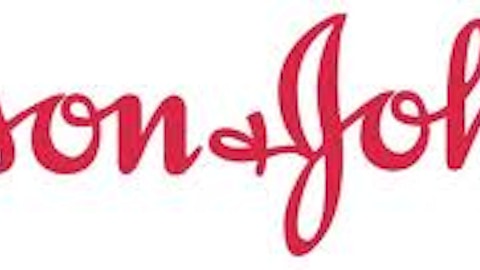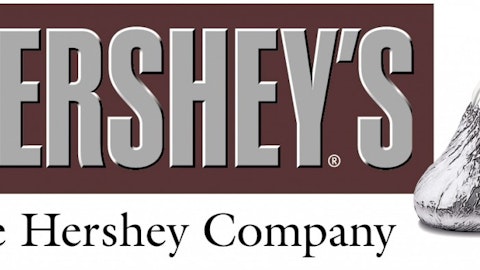Billionaire Warren Buffett has said many times that his investment philosophy is based on a simple rule: he invests in what he knows and understands.
You can practice the same rule (although that is no guarantee that you will achieve the success of Buffett), and a good place to start is investing in the companies that make the products you use every day. Two of those companies that are familiar to most are The Procter & Gamble Company (NYSE:PG) and Johnson & Johnson (NYSE:JNJ).
The Procter & Gamble Company (NYSE:PG) manufactures beauty and household products, with well-known brands such as Head & Shoulders, Crest, Gillette, and Tide. Meanwhile, Johnson & Johnson (NYSE:JNJ) focuses more on healthcare products, with brands such as Tylenol, Listerine, and Band-Aid, in addition to medical devices and several prescription drug brands.
Though they are categorized in different industries (Johnson & Johnson (NYSE:JNJ) in the health care sector and The Procter & Gamble Company (NYSE:PG) in consumer goods), the two companies have many similarities. They are reputable companies with a host of well-known product brands that people have all over their homes. Both companies operate globally, are components of the Dow Jones Industrial Average, and have been around for years. Based on market capitalization, they are almost equal in size, with Johnson & Johnson (NYSE:JNJ) valued at $235 billion and The Procter & Gamble Company (NYSE:PG) valued at $211 billion. Additionally, both pay a dividend of about 3%–a good dividend for many portfolios.
Head To Head Comparison
On a basic level, Procter & Gamble is a better value than Johnson & Johnson: Johnson & Johnson (NYSE:JNJ) is trading at a price to earnings ratio of about 23 and a price to book ratio of about 3.5, while The Procter & Gamble Company (NYSE:PG) is trading at a P/E of around 17 and a price to book of around 3. However, there is much more to these two companies.
In terms of recent stock performance, Johnson & Johnson hit a 52-week high of $85.89 on April 29. The stock has been on a steady rise from $62, an increase of 39%, since June 2012. This is a welcome movement for Johnson & Johnson stockholders, who have watched the stock move nowhere in the three to four years prior to the recent upswing. Meanwhile, Procter & Gamble has moved from its low in June to a 52-week high of $82.54 set on April 23. This has allowed the company to recoup the losses the company suffered in value in late 2008, early 2009, when the stock dropped from about $75 to about $45. Johnson & Johnson has a strong debt-to-equity ratio, with its debt level equal to only 25% of its total equity. It also has stronger liquidity, with a 1.3 quick ratio and a 1.9 current ratio.
Both companies recently reported earnings, and both were impressive. Procter & Gamble reported the results for the January-March 2013 period, its fiscal year third quarter. Net sales increased 2% to $20.6 billion, while earnings per share were $0.88, an increase of 7% versus the prior year period. The company generated operating cash flow of $3.9 billion during the quarter and raised its share repurchase target from $5 billion to $6 billion for the fiscal year. Over the last four fiscal years, the company’s sales have been relatively flat ($79 billion in 2009 to $83.7 billion in 2012), while net income has fallen in each of the last four years, from $13.44 billion in fiscal 2009 to $10.76 billion in the last fiscal year.
Around the same time that Procter & Gamble announced earnings, Johnson & Johnson announced sales of $17.5 billion for the first quarter of 2013, an increase of 8.5% as compared to the first quarter of 2012. Net earnings for the current quarter were $4.1 billion and diluted earnings per share were $1.44, representing increases of 8% and 5.1%, respectively, as compared to the same period in 2012. Over the last four full years, Johnson & Johnson’s sales have increased from $62 billion in 2009 to $67 billion last year. Net income growth has been non-existent during the same time, totaling $12.27 billion in 2009, $13.33 billion in 2010, $9.67 billion in 2011 and $10.85 billion in 2012.
Finally, it’s worth taking a quick look at the analysts’ thoughts: Johnson & Johnson’s analysts are split, with six strong buy ratings, seven buys, eight holds and two underperforms, while Procter & Gamble’s analysts have seven strong buy ratings, six buys and 12 holds.
For many people, these two companies are attractive potential investments. However, the decision on which to buy may be difficult, as both have pros and cons, and forecasting future performance is a guessing game. Additionally, others may be concerned about diversification and not want to put money into one of these stocks specifically. For these people, there are many ETFs that will allow you to own both of these companies, while remaining diversified amongst many companies and gaining exposure to a wider portfolio.
One of the best options is iShares Morningstar Large Core Index Fund. The underlying index of this fund gauges the performance large cap stocks trading on the major exchanges that meet growth and value objectives as determined by the index. The fund holds 86 stocks with Johnson & Johnson (6%) as the second largest holding and Procter & Gamble (5.39%) as the third largest. Other companies this ETF has in its top 10 holdings include Microsoft, Berkshire Hathaway, Wells Fargo, Wal-Mart, PepsiCo, Amgen, United Technologies and CVS Caremark.
The Takeaway
Overall, Procter & Gamble and Johnson & Johnson are both attractive investments, and both provide a good outlook for future growth. Hopefully the above anaylsis can help guide your decision making, and if you still cannot reach a decision, you can opt for one of the ETFs discussed above. The important message here is to make sure your portfolio has exposure to a variety of markets and that you stay up to date on all of the opportunities available.
Daniel Murray has no position in any stocks mentioned. The Motley Fool recommends Johnson & Johnson and Procter & Gamble. The Motley Fool owns shares of Johnson & Johnson.
Additional Disclosure: Catalyst Capital is not a registered investment advisor or broker/dealer. Readers are advised that the material contained herein should be used solely for informational purposes. This information is not investment advice or a recommendation or solicitation to buy or sell any securities. Catalyst Capital does not purport to tell or suggest which investment securities readers should buy or sell. Readers should conduct their own research and due diligence and obtain professional advice before making investment decision. Catalyst Capital or anyone associated with Catalyst Capital will not be liable for any loss or damage caused by information obtained in our materials. Readers are solely responsible for their own investment decisions. Investing involves risk, including the loss of principal.
The article Take Your Pick: PG vs JNJ originally appeared on Fool.com and is written by Daniel Murray.
Daniel is a member of The Motley Fool Blog Network — entries represent the personal opinion of the blogger and are not formally edited.
Copyright © 1995 – 2013 The Motley Fool, LLC. All rights reserved. The Motley Fool has a disclosure policy.






